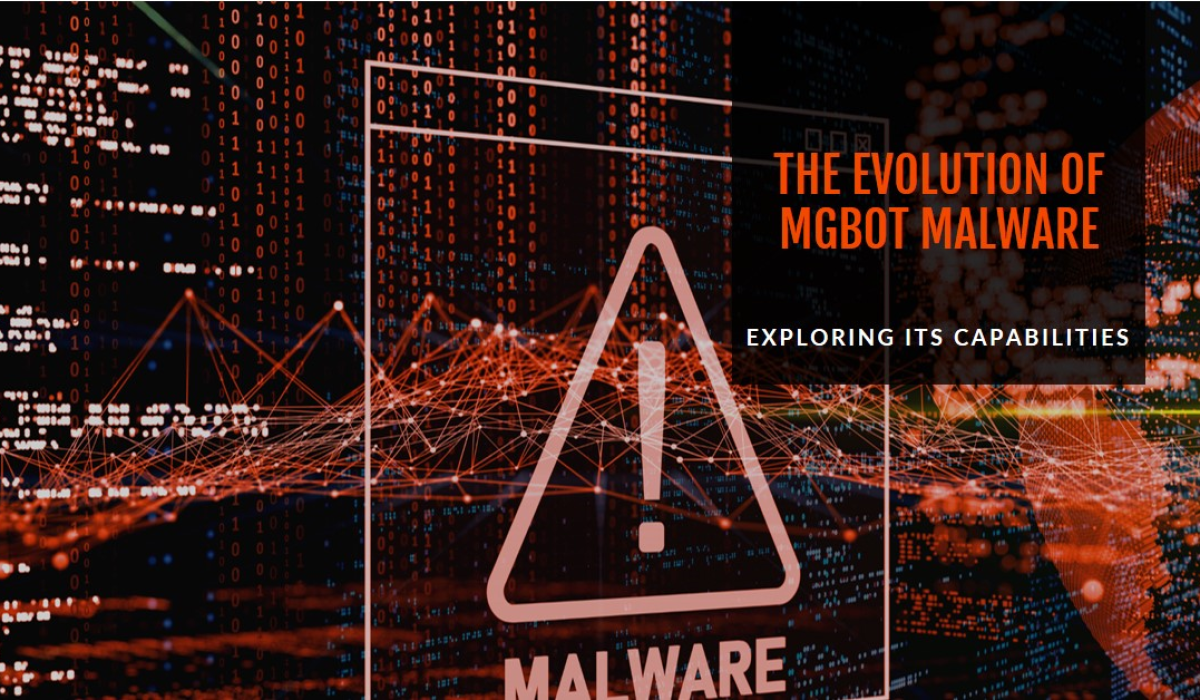MgBot is a sophisticated, modular malware primarily employed by the Evasive Panda APT group. Its modular architecture grants it remarkable versatility, allowing it to adapt to evolving threat landscapes. This adaptability, coupled with its history of use in espionage, places MgBot as a significant player in the global cybersecurity threat spectrum.
Historical Context of MgBot
Origins and Development:
- MgBot, also known as PlugX or Korplug, is believed to have first emerged around 2008.
- It was developed as a Remote Access Trojan (RAT) primarily used for cyber espionage.
- The malware is thought to have originated in China and has been associated with several Chinese state-sponsored hacking groups.
- Over time, MgBot has undergone numerous iterations and improvements, making it a long-lived and adaptable threat.
Use in Espionage Activities:
- MgBot has been primarily used for cyber espionage campaigns targeting government agencies, defense contractors, and high-tech companies.
- Its capabilities include:
- Remote control of infected systems
- File extraction
- Keylogging
- Screen capture
- Command execution
- The malware has been observed in campaigns across various regions, including Southeast Asia, Europe, and North America.
- It’s known for its ability to evade detection and maintain persistence on infected systems.
Notable Incidents Related to MgBot:
- Operation Molerats (2012-2013):
- MgBot was one of the primary tools used in this campaign targeting Middle Eastern governments and financial institutions.
- The operation was attributed to a threat group believed to be operating out of China.
- Targeting of Myanmar Government (2015):
- Researchers discovered MgBot being used in a campaign against Myanmar government agencies.
- The attack used spear-phishing emails with malicious attachments to deliver the malware.
- MONSOON APT Campaign (2016):
- This campaign, attributed to a group called MONSOON (also known as APT28), used MgBot to target government and military organizations in South Asia.
- The attackers used carefully crafted spear-phishing emails with malicious attachments.
- Attacks on Uyghur Population (2013-2014):
- MgBot was identified as one of the tools used in cyber attacks targeting the Uyghur ethnic group.
- These attacks were believed to be part of a larger surveillance campaign.
- Operation Hangover (2013):
- While not exclusively using MgBot, this large-scale cyber espionage campaign included MgBot as part of its toolkit.
- The operation targeted a wide range of entities, including government and private organizations across multiple countries.
- Ongoing Evolution and Use (2020 onwards):
- Security researchers continue to observe new variants of MgBot being used in targeted attacks.
- The malware has shown adaptability, with newer versions implementing additional evasion techniques and exploiting current events (like COVID-19) as lures in phishing campaigns.
Key Characteristics of MgBot’s Historical Use:
- Persistent Threat: MgBot’s longevity in the cyber threat landscape is notable, having been active for over a decade.
- Continuous Evolution: The malware has been regularly updated to evade detection and add new capabilities.
- State-Sponsored Associations: Many cybersecurity firms and government agencies have linked MgBot to Chinese state-sponsored hacking groups.
- Targeted Attacks: While capable of broad campaigns, MgBot is typically used in highly targeted attacks against specific organizations or groups.
Recent Updates and Features of MgBot
Latest Versions:
- MgBot (also known as PlugX or Korplug) has been continuously updated over the years, with new versions being discovered regularly.
- Recent observations (as of the last couple of years) have shown that MgBot continues to be actively developed and deployed.
- Security researchers have identified multiple variants, each with slight modifications to its core functionality and evasion techniques.
Improvements in Modules and Functionalities:
- Enhanced Command and Control (C2) Communication:
- Implementation of more sophisticated encryption algorithms for C2 traffic.
- Use of legitimate cloud services (like Dropbox or Google Drive) for C2 communication, making detection more challenging.
- Implementation of domain generation algorithms (DGAs) to dynamically create new C2 domains.
- Expanded Data Exfiltration Capabilities:
- Improved file search and categorization to target specific types of sensitive documents.
- Enhanced screenshot capabilities, including the ability to capture specific application windows.
- Implementation of audio recording features to capture ambient sounds or conversations.
- Advanced Persistence Mechanisms:
- Use of legitimate system utilities and processes for persistence (known as “living off the land” techniques).
- Implementation of bootkit functionality to maintain persistence across system reboots.
- Ability to inject itself into multiple running processes for redundancy.
- Modular Architecture:
- Recent versions have adopted a more modular approach, allowing attackers to deploy only the necessary components for each specific operation.
- This modularity makes the malware more flexible and harder to detect in its entirety.
- Enhanced Keylogging and Information Gathering:
- Improved keylogging capabilities with the ability to target specific applications.
- Enhanced system information gathering, including detailed hardware and software inventories.
- Capability to extract saved credentials from various browsers and applications.
- Network Propagation:
- Implementation of techniques to spread laterally within a compromised network.
- Ability to exploit known vulnerabilities in network protocols and services for propagation.
Adaptation to Evade Detection:
- Polymorphic Code:
- Use of polymorphic techniques to generate unique malware instances for each infection, making signature-based detection less effective.
- Implementation of runtime code obfuscation to hinder static analysis.
- Anti-Analysis Techniques:
- Enhanced detection of virtualized environments and sandboxes, with the ability to alter behavior when analyzed.
- Implementation of anti-debugging techniques to complicate reverse engineering efforts.
- Fileless Malware Techniques:
- Increased use of fileless malware techniques, where the malware operates primarily in memory without writing to disk.
- Leveraging legitimate system tools (like PowerShell) to execute malicious code, blending in with normal system operations.
- Stealth Improvements:
- Enhanced ability to hide its presence by manipulating system logs and security software.
- Use of rootkit techniques to conceal malicious processes and network connections.
- Exploitation of Current Events:
- Adapting social engineering tactics to exploit current events (e.g., COVID-19 themed phishing).
- Tailoring lures to specific targets based on their interests or responsibilities.
- Multi-stage Payload Delivery:
- Implementation of multi-stage payload delivery to minimize the initial footprint of the malware.
- Use of legitimate services to host parts of the payload, making it harder to detect and block.
- Abuse of Legitimate Tools:
- Increased use of legitimate system administration and security tools to perform malicious actions, a technique known as “living off the land.”
- This approach makes it challenging to distinguish malicious activities from legitimate system operations.
- Dynamic Configuration:
- Implementation of dynamic configuration capabilities, allowing the malware to adapt its behavior based on the specific environment it’s operating in.
- This includes the ability to change C2 servers, alter its operational parameters, and update modules on the fly.
These recent updates and adaptations demonstrate MgBot’s ongoing evolution as a sophisticated cyber espionage tool. Its developers continue to refine its capabilities, focusing on stealth, persistence, and adaptability. This constant evolution underscores the importance of using multi-layered, behavior-based security approaches rather than relying solely on signature-based detection methods.
Impact and Persistent Threat
Danger Posed by Modular Malware Frameworks like MgBot:
- Adaptability and Customization:
- Modular frameworks allow attackers to tailor the malware to specific targets or environments.
- They can deploy only the necessary components, minimizing detection risk.
- Example: MgBot operators can use different modules for data exfiltration, keylogging, or network propagation based on the target’s value and security posture.
- Long-term Persistence:
- These frameworks are designed for sustained operations within compromised networks.
- They can maintain access even after initial detection and remediation attempts.
- Case Study: In some instances, MgBot infections have persisted in organizations for months or even years, continually evolving to evade detection.
- Sophisticated Data Exfiltration:
- Modular malware can methodically extract sensitive data over extended periods.
- They often use stealthy techniques to avoid triggering data loss prevention systems.
- Impact: This can lead to significant intellectual property theft or exposure of classified information, especially in targeted attacks against government or high-tech sectors.
- Potential for Large-scale Attacks:
- While often used for targeted operations, modular frameworks can potentially be weaponized for broader attacks.
- Their flexibility allows for rapid adaptation to exploit emerging vulnerabilities.
- Scenario: A MgBot variant could be quickly modified to exploit a zero-day vulnerability, potentially compromising numerous organizations before patches are widely deployed.
Evolution and Continued Threat:
- Continuous Development:
- Malware like MgBot is actively maintained and updated by skilled development teams.
- New modules and capabilities are regularly added to counteract improving defensive measures.
- Trend: Recent years have seen MgBot incorporate more sophisticated evasion techniques and exploit newer vulnerabilities.
- Adaptation to Changing IT Landscapes:
- As organizations adopt new technologies (e.g., cloud services, IoT devices), modular malware evolves to target these new attack surfaces.
- Example: MgBot has been observed adapting to target cloud-based infrastructure and leverage legitimate cloud services for C2 communication.
- Learning from Detection:
- Each time a variant is detected and analyzed, developers learn and improve their techniques.
- This creates a constant cat-and-mouse game between attackers and defenders.
- Result: Newer versions of MgBot often incorporate lessons learned from previous detections, making them increasingly difficult to identify.
- Exploitation of Current Events and Trends:
- Modular frameworks can quickly adapt their social engineering and initial infection vectors.
- They leverage current events or trends to increase the effectiveness of phishing or watering hole attacks.
- Example: MgBot campaigns have been observed using COVID-19 themed lures to increase infection rates.
Challenges in Defending Against Adaptable Threats:
- Signature-based Detection Limitations:
- Traditional antivirus solutions struggle against modular malware that can generate unique signatures for each infection.
- Challenge: Security teams must rely more on behavior-based detection, which requires more sophisticated tools and analysis.
- Complexity of Modern IT Environments:
- The diverse and distributed nature of modern networks provides numerous potential entry points and hiding spots for malware.
- Difficulty: Comprehensive monitoring and protection of all assets, including cloud resources and remote work environments, is increasingly challenging.
- Rapid Evolution of Tactics:
- The speed at which modular malware can adapt often outpaces the update cycles of many organizations’ security measures.
- Issue: By the time a specific variant is well-understood and detectable, new versions may already be in circulation.
- Resource Intensity of Defense:
- Effectively defending against advanced modular malware requires significant resources, both in terms of technology and skilled personnel.
- Reality: Many organizations, especially smaller ones, struggle to maintain the necessary level of security sophistication.
- Balancing Security with Usability:
- Implementing stringent security measures to combat advanced threats can impact user productivity and system performance.
- Dilemma: Organizations must find a balance between robust security and maintaining operational efficiency.
- Supply Chain Vulnerabilities:
- Modular malware like MgBot often exploits trust relationships in software supply chains.
- Challenge: Securing not just an organization’s own systems, but also vetting and monitoring all third-party software and services.
- Human Factor:
- Despite technological advancements, human error remains a significant vulnerability.
- Ongoing Need: Continuous user education and awareness training to combat increasingly sophisticated social engineering tactics.
- Geopolitical Aspects:
- When state-sponsored actors are involved, as is often suspected with MgBot, the resources and persistence behind the threat increase dramatically.
- Complication: Defending against such well-resourced and motivated adversaries requires a level of capability that many organizations struggle to achieve.
In conclusion, modular malware frameworks like MgBot represent a significant and persistent threat to cybersecurity. Their adaptability, sophistication, and continuous evolution pose formidable challenges to defenders. Organizations must adopt a multi-layered, proactive approach to security, combining advanced technology, skilled personnel, continuous monitoring, and adaptive strategies to effectively combat these evolving threats. The fight against such adaptable malware is not a one-time effort but an ongoing process requiring vigilance, resources, and a commitment to staying ahead of emerging threats.





